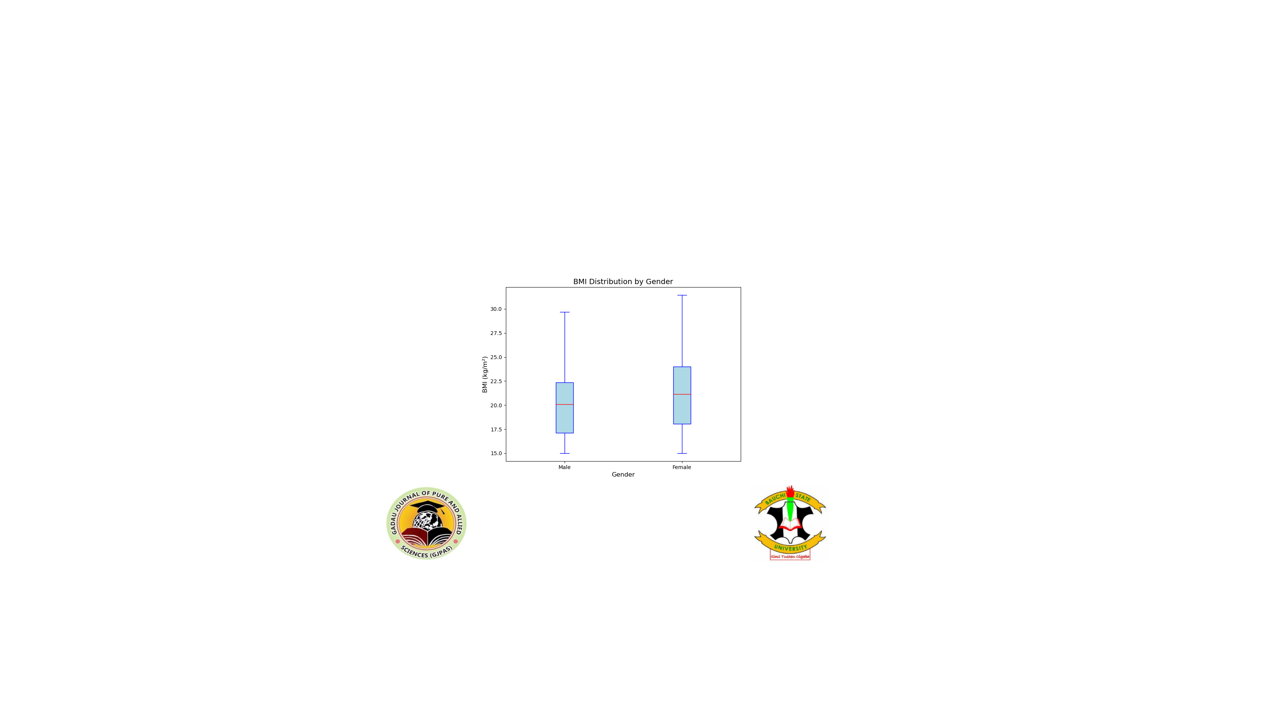Determinants of obesity and overweight among school-aged children in Bauchi, Nigeria: A mixed-methods study
DOI:
https://doi.org/10.54117/m2vdh424Keywords:
Childhood obesity, physical activity, nutrition, school health, mixed-methods, public healthAbstract
Background: Childhood obesity is an escalating public health issue with serious long-term implications. This study investigates the factors contributing to overweight and obesity among school-aged children in Bauchi, Nigeria, utilizing a mixed-methods design. Materials and methods: A cross-sectional survey was conducted among 600 students aged 11–15 from primary schools in Bauchi. Quantitative data, that covered socio-demographics, physical activity, and dietary habits, were analyzed using descriptive statistics, chi-square tests, Spearman correlations, Mann-Whitney U tests, and logistic regression. In-depth interviews with school administrators and physical education teachers provided qualitative insights into challenges and facilitators of healthy behaviors. Results: Statistical analysis revealed a significant relationship between gender and obesity status (p = 0.0053), with females exhibiting greater BMI variation. Physical activity was inversely associated with BMI (r = -0.45, p = 0.002). Dietary assessments indicated frequent consumption of sugary snacks and limited intake of balanced meals. Qualitative findings identified major obstacles such as inadequate facilities, weak policy implementation, and low community involvement. Schools that prioritized physical education and nutrition policies saw greater student participation in healthy activities. Conclusion: Tackling childhood obesity necessitates a comprehensive strategy that includes enhancing school infrastructure, expanding access to recreational facilities, and enforcing dietary and physical activity policies. Future efforts should emphasize community-based interventions and stronger policy implementation to achieve lasting change.
References
Adebusoye, B. (2023). Predictors of physical activity in school attending adolescents in Lagos State, Nigeria University of Nottingham.
Bull, F. C., Al-Ansari, S. S., Biddle, S., Borodulin, K., Buman, M. P., Cardon, G., Carty, C., Chaput, J.-P., Chastin, S., & Chou, R. (2020). World Health Organization 2020 guidelines on physical activity and sedentary behaviour. British
journal of sports medicine, 54(24), 1451-1462.
Chaput, J.-P., Willumsen, J., Bull, F., Chou, R., Ekelund, U., Firth, J., Jago, R., Ortega, F. B., & Katzmarzyk, P. T. (2020). 2020 WHO guidelines on physical activity and sedentary behaviour for children and adolescents aged 5–17 years: summary of the evidence. International Journal of Behavioral Nutrition and Physical Activity, 17, 1-9.
Commission, N. P. (2013). Nigeria demographic and health survey 2013.
El Mouzan, M. I., Foster, P. J., Al Herbish, A. S., Al Salloum, A. A., Al Omer, A. A., Qurachi, M. M., & Kecojevic, T. (2010). Prevalence of overweight and obesity in Saudi children and adolescents. Annals of Saudi medicine, 30(3), 203-208.
Houinato, O. A., Kpozehouen, A., Hounkpatin, B., Gbédji, K. Y., Robin, H., Mizéhoun-Adissoda, C., Guédou, F., Houinato, D. S., & Perrin, R. X. (2019). Prevalence and factors associated with overweight and obesity among adolescents in schools in Benin in 2016. Open Journal of Epidemiology, 9(03), 213.
Janssen, I., & LeBlanc, A. G. (2010). Systematic review of the health benefits of physical activity and fitness in school-aged children and youth. International Journal of Behavioral Nutrition and Physical Activity, 7, 1-16.
Joshua, O. R., Adeoye, O. O., & Ibrahim, O. (2013). Social cultural factors influencing women’s participation in sports as perceived by female students of the University of Ilorin. Makerere journal of higher education, 4(2), 159–167-159–167.
Lemeshow, S. (1990). Adequacy of sample size in health studies. (No Title).
Levin, K. A. (2006). Study design III: Cross-sectional studies. Evidence-based dentistry, 7(1), 24-25.
Must, A., & Strauss, R. S. (1999). Risks and consequences of childhood and adolescent obesity. International journal of obesity, 23(2), S2-S11.
Ng, M., Fleming, T., Robinson, M., Thomson, B., Graetz, N., Margono, C., Mullany, E. C., Biryukov, S., Abbafati, C., & Abera, S. F. (2014). Global, regional, and national prevalence of overweight and obesity in children and adults during 1980–2013: a systematic analysis for the Global Burden of Disease Study 2013. The lancet, 384(9945), 766-781.
Oluwasanu, M. M., & Oladepo, O. (2017). Effects of a multi-level intervention on the pattern of physical activity among in-school adolescents in Oyo state Nigeria: a cluster randomised trial. BMC public health, 17, 1-11.
Oyeyemi, A. L., Ishaku, C. M., Oyekola, J., Wakawa, H. D., Lawan, A., Yakubu, S., & Oyeyemi, A. Y. (2016). Patterns and associated factors of physical activity among adolescents in Nigeria. PloS one, 11(2), e0150142.
Popkin, B. M., Adair, L. S., & Ng, S. W. (2012). Global nutrition transition and the pandemic of obesity in developing countries. Nutrition reviews, 70(1), 3-21.
Story, M., Kaphingst, K. M., Robinson-O'Brien, R., & Glanz, K. (2008). Creating healthy food and eating environments: policy and environmental approaches. Annu. Rev. Public Health, 29(1), 253-272.

Downloads
Published
Issue
Section
License
Copyright (c) 2025 Gadau Journal of Pure and Allied Sciences

This work is licensed under a Creative Commons Attribution 4.0 International License.

